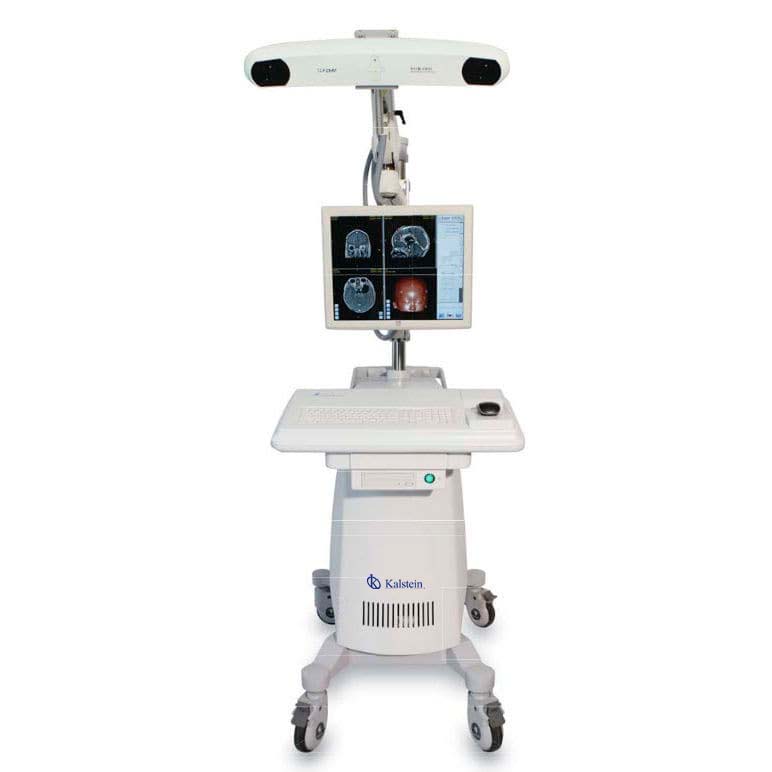A surgical navigation system is an intraoperative imaging-guided localization system, the primary function of which is to provide surgeons with real-time feedback on the location of surgical instruments in relation to the patient’s anatomy. It thus helps in the planning and execution of surgical procedures in operating rooms by guiding surgical instruments such as the electrical knife. There are two types of navigation system, the optical and the electromagnetic, both providing combined flexibility and efficiency in a design that takes up little space in the operating room.
Nowadays there is an increase in the demand for less invasive surgeries, with reduced hospital stays, little pain for the patient and rapid wound healing. This has led to a considerable increase in the demand for surgical navigation systems.
Parts of a surgical navigation system
A surgical navigation system consists of several instruments that are connected to screens by sensors using imaging methods. These systems offer optical tracking capabilities as well as integration with external devices such as microscopes and ultrasound.
This modern medical device consists of software that allows the deployment of two- and three-dimensional images, an intraoperative location instrument, and a method of recording between the images and the operating room environment. In the most common ones, infrared cameras can be found to locate the instruments, while other models use an electromagnetic field.
What is the function of a navigation system?
These surgical optical navigation systems aim to help accurately locate anatomic structures in open or percutaneous procedures. They are now considered an integral part of computer-assisted surgery. That is, they provide surgical procedures based on digital imaging technology and provide surgeons with the opportunity to perform preoperative planning and precise instrument handling during the operation.
In this sense, surgical navigation systems function with conventional imaging techniques such as computed tomography or magnetic resonance and can be used in procedures such as:
- Biopsy.
- Catheter placement.
- Tumor resection.
- Spinal decompression.
- Pelvic or spinal fixation.
- Treatment for spinal or sacral trauma.
- Deep brain stimulation electrode positioning.
How does an optical surgical navigation system work?
An optical surgical navigation system works based on the principle of stereoscopic vision with high accuracy. Surgical navigation systems equipment includes mainly polaris navigation systems, micron navigation, and others.
These systems are also used in guided neurosurgery. Polaris surgical navigation systems deliver position information on the monitor using 3D measurement navigation technology using a positioning laser.
What do we offer you in Kalstein?
Kalstein is a company MANUFACTURER of medical and laboratory equipment of the highest quality and with the most advanced technology at the best prices in the market, so we guarantee you a safe and effective purchase, knowing that you have the service of a company solid and committed to health. This time we present you our innovative electromagnetic surgical navigation system YR02143 computer assisted, which has the following features: HERE
- It is widely used for surgical visualization, planning, and navigation to help minimize iatrogenic trauma to surrounding brain tissue and reduce the risk of surgical complications in cranial procedures (such as cranial neurology and ENT surgery).
- The advanced optical tracking system tracks real-time 3D positioning and orientation of active or passive markers attached to surgical tools, providing exceptional accuracy (1.0 mm spatial resolution) and reliability.
- The method of 3D simulation and modeling of anatomical structures in material (such as skin, skull, brain tissue, or target lesion) can be easily defined for surgical convenience.
- With built-in navigation probe and advanced optical measurement technology, the surgeon can easily quantify the size and position of lesions, and then design the surgical approach in a scientific manner.
- The system provides operators with four navigation modes for comprehensive monitoring of the navigation process.
- The intelligent software will help calibrate and compensate for unexpected changes in anatomic structure and brain change induced by removal of the area of intracranial injury.
- The YR02143 navigation system can be operated with a surgeon mouse or a touch monitor mounted on the mobile cart or ceiling suspension arm.
- The system automatically saves all patient image data and registration information to enable surgeons to quickly charge and continue surgical navigation against unexpected power outage.
- It can be used for all neurologic and OLR surgeries, especially for deep intracranial injuries, small intracranial volume injuries, intracranial lesions with a low invasive border, and minimally invasive surgeries.
For more information we invite you to check HERE




